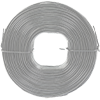Nov . 26, 2024 14:17 Back to list
Manufacturers of Cold Ribbed Steel Bars for Reinforcement Mesh Solutions
Understanding Cold Ribbed Steel Bars for Reinforcing Mesh A Comprehensive Overview
In the construction industry, the role of materials in ensuring structural integrity cannot be overstated. One such critical material is the cold ribbed steel bar, particularly when used for reinforcing mesh. This article delves into the characteristics of cold ribbed steel bars, their manufacturing process, benefits, and applications.
What are Cold Ribbed Steel Bars?
Cold ribbed steel bars, also known as cold twisted deformed bars (CTD), are a type of reinforcement steel that has been subjected to a cold working process. This process increases the yield strength of the steel, making it a more robust and durable option for construction. The ribs that are formed during this cold twisting process improve the bond between the steel bar and concrete, which is essential for high-strength reinforcement.
Manufacturing Process
The manufacturing of cold ribbed steel bars involves several steps, each designed to enhance the material's properties. Initially, hot-rolled steel bars are produced, which are then subjected to a cold twisting process. This process not only enhances the yield strength but also results in the formation of ribs on the surface of the bars. These ribs provide better mechanical anchorage in concrete compared to smooth bars.
Quality control is critical during the manufacturing process. Reputable manufacturers adhere to set standards and guidelines to ensure the bars meet necessary specifications. This includes rigorous testing for yield strength, tensile strength, and elongation, ensuring the final product is resilient and reliable.
Advantages of Cold Ribbed Steel Bars
1. High Strength and Durability Cold ribbed steel bars offer superior tensile strength compared to conventional steel. The cold working process enhances the material’s properties, resulting in bars that can withstand significant stresses.
2. Improved Bonding The unique ribbed surface of these steel bars provides an excellent bond with concrete. This bonding is crucial for the integrity of the reinforced structure, allowing for better load distribution and resistance to cracking.
3. Cost-Effectiveness While the initial investment might be higher than that of mild steel bars, the long-term durability and reduced maintenance costs make cold ribbed bars a cost-effective option for many projects.
cold ribbed steel bar for reinforcing mesh manufacturers

4. Versatility Cold ribbed steel bars are suitable for various construction applications, including beams, columns, slabs, and foundations. Their adaptability makes them a preferred choice among engineers and contractors.
5. Sustainability Many manufacturers are adopting eco-friendly practices in the production of cold ribbed steel bars. These practices reduce waste and energy consumption, aligning with global standards for sustainable construction.
Applications
Cold ribbed steel bars find extensive use in a variety of construction projects. Some of the key applications include
- Residential Buildings In residential construction, cold ribbed bars are used for reinforced concrete beams and slabs, providing the necessary strength to withstand everyday loads.
- Commercial Structures High-rise buildings and commercial complexes rely heavily on cold ribbed reinforcing mesh for enhanced structural support, ensuring safety and stability.
- Infrastructure Projects Roads, bridges, and tunnels use cold ribbed steel bars extensively. Their high strength and durability make them ideal for withstanding environmental stresses.
- Industrial Facilities Factories and warehouses often employ cold ribbed bars for reinforcing heavy machinery foundations, ensuring longevity and reliability under significant loads.
Conclusion
Cold ribbed steel bars for reinforcing mesh offer an array of benefits that make them indispensable in modern construction. From their superior strength and bonding capabilities to their versatility in various applications, these steel bars are crucial for ensuring the safety and longevity of structures.
As manufacturers continue to innovate and improve production processes, the demand for cold ribbed steel bars is expected to grow, reflecting an industry increasingly focused on quality and durability. For anyone involved in construction, understanding the value of these materials is essential for making informed decisions that impact the success of any project.
-
High-Quality Steel Grating Solutions for Industrial Applications | Durable, Safety, Customization
NewsJul.13,2025
-
Advanced Solutions-CompanyX|Enterprise Efficiency&Cost Reduction
NewsJul.13,2025
-
Sustainable Manufacturing-EcoTech Innovations|Waste-to-Energy System&Zero Emissions
NewsJul.13,2025
-
Welded Wire Mesh- Buildings Wiremesh Co., Ltd.|Durable Construction Material&Industrial Strength Solution
NewsJul.13,2025
-
Smart Production Solutions-Example Corp|AI Automation&IoT Monitoring
NewsJul.13,2025
-
Advanced Industrial Solutions-Advanced Industrial Solutions|Manufacturing Efficiency&Productivity
NewsJul.13,2025

